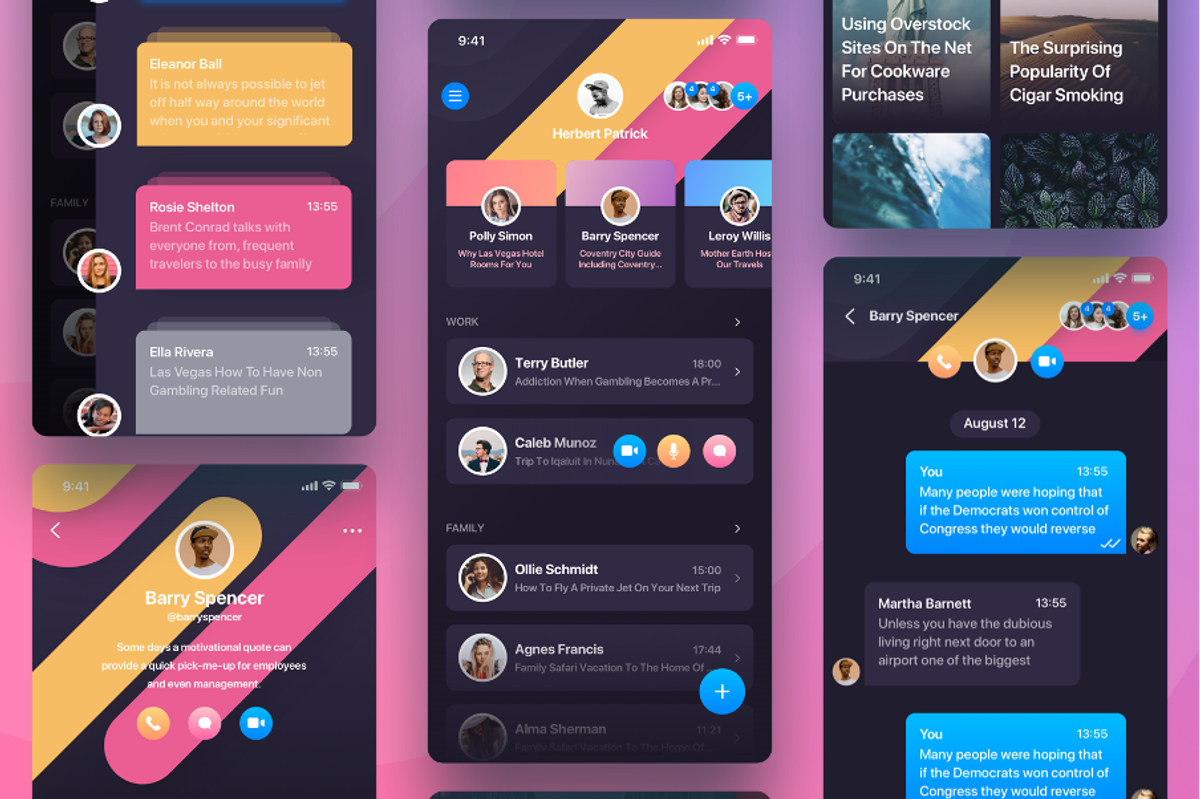
unsplash
UI/UX design principles and trends to follow in 2025
Explore essential UI/UX design principles and the top trends shaping digital experiences in 2025. Learn how to create intuitive, user-friendly, and cutting-edge designs.

Explore essential UI/UX design principles and the top trends shaping digital experiences in 2025. Learn how to create intuitive, user-friendly, and cutting-edge designs.
Design fundamentals stay the same, even if trends change. In this article, we’ll cover the core principles of UI/UX design. The tips below will guide your decisions on every project, be it an app, a desktop software program, or a website. Plus, we'll highlight some key trends to watch in 2025.
The best interfaces let users act without thinking. Everything should feel intuitive. Imagine walking into a city. You feel at ease if the streets are clear and the signs are easy to read. Now imagine a confusing city with no clear direction. That’s how a bad interface feels. Keep it easy to follow.
Cluttered designs slow users down. If users know what a button does, don’t over-explain it. Just like a road sign doesn’t need extra flashing lights, your design doesn’t need extra details. Keep things clean.
Think of a radio: You want the signal clear, not full of static. Your interface should work the same way. Cut distractions and let the important stuff stand out. The less clutter, the easier for users to focus on what matters.
People like things that feel familiar. When you open an app, you expect certain elements to be in familiar places. A button should look like a button. A menu should be easy to find. Don’t make users figure out new controls.
Most users don’t read every word—they scan. Make it easy for them to find key points. Use bullet points, headings, and visuals to break up text. This way, they get what they need fast without reading paragraphs.
If something works, don’t change it. Use design patterns that users are already comfortable with. Improve them, but don’t reinvent the wheel. Familiarity helps users feel at ease.
People can only handle 5 to 7 pieces of information at once. Limit choices. Too many options overwhelm users. Limit menus and actions to make things clear and focused.
Information should be organized logically. If users are looking for privacy settings, don’t make them scroll through everything else. Logical grouping makes it easier for users to find what they need.
Great designs don’t need instructions. When users interact with it, they should know exactly what to do. If users need help figuring something out, something’s wrong. A good design feels natural.
Don’t hide important elements. Keep them visible and easy to access. If it’s crucial to the user’s task, it should be easy to find. No digging around.
Users should be able to access what they need in three clicks or less. If something is buried too deep in menus, they will get frustrated. Keep content easy to find.
Inconsistent designs confuse users. A button that works one way in one place should work the same everywhere. Consistency helps users feel confident and builds trust.
Every feature should have a clear purpose. When users click a button, they should know what will happen. There should be no confusion, just simple, direct actions.
Mistakes happen. Add safeguards like confirmations before significant actions or ways to undo errors to reduce frustration and make users feel safe.
Clear, concise copy helps users understand what to do. Please keep it simple and avoid jargon. Good copy makes the user experience smoother.
Group controls and settings in one place. This way, users can focus on tasks without wasting time searching for what they need.
UI/UX design services continue to evolve rapidly, with new trends emerging every year to meet changing user expectations and technological advancements.
By 2025, AI will significantly impact user experience personalization. Machine learning will enable apps and websites to adapt to user preferences, activities, and interactions immediately.
For example, a fitness app may use AI to track your activities and offer a customized plan based on your goals and results. It may suggest different workouts or routines to assist you in getting beyond a plateau if it detects that you're reaching one.

Accessibility for all users, including those with impairments, will be given top priority in UI/UX design in 2025. Empathic design will become the standard, and accessibility tools will be incorporated into the design process from the beginning.
For instance, programs will improve color contrast, font size modifications, and text-to-speech for those with visual impairments.
Voice recognition is becoming increasingly popular, and by 2025, voice-activated interfaces should be smoother and more user-friendly. Users will communicate with apps and gadgets by vocal orders rather than typing or tapping. Consider it a means of simplifying the user experience, particularly for multitaskers.
For example, AR can transform how users interact with apps. Imagine navigating a retail app and using AR to "try on" clothes virtually. Similarly, smart home apps will be easier to use with voice commands like saying, "Set the perfect mood for dinner, "and automatically adjust the temperature, lighting, and music to your liking.
The trend toward modest yet powerful micro-interactions that improve user engagement will continue in UI design in 2025. Emotional signals will enhance these little motions, such as a button that changes color when the user hovers over it. By providing feedback in a more human-like manner, these cues might give users a sense of control over their interactions.
For example, when you press a button in an application, you can see a faint pulse or hear a pleasant sound when you've finished an activity instead of merely seeing a color change. This can enhance the experience by adding another level of enjoyment and feedback.
More immersive digital experiences will emerge in 2025 as 3D interfaces and haptic feedback technology advance. Touch and movement input greatly influence user interactions with applications, particularly in the gaming and e-commerce industries.
Imagine buying shoes online, not just viewing them on a screen. As you browse through different styles, you can feel the weight of the shoe on your finger or sense the texture of the material through haptic feedback. Similarly, in virtual reality games, haptic feedback lets you "feel" actions like holding an object or pulling a bowstring.
Businesses are paying more attention to sustainability, which is affecting UI/UX design services. In 2025, we expect to see more useful,visually beautiful, and ecologically beneficial designs.
Applications and websites, for example, can use resource-efficient animations to load quickly and smoothly or dark mode to conserve energy on OLED screens. Businesses may also decide to employ green hosting services or incorporate tools that help minimize their digital carbon footprint. According to Cybernews, opting for cheap web hosting providers that also prioritize sustainability can be a smart way for startups and small businesses to reduce costs while supporting environmentally friendly practices.
Voice recognition is becoming increasingly popular, and by 2025, voice-activated interfaces should be smoother and more user-friendly. Users will communicate with apps and gadgets by vocal orders rather than typing or tapping. Consider it a means of simplifying the user experience, particularly for multitaskers.
Smart home apps will likely become more user-friendly, allowing users to control lights, security, and thermostats using voice commands. For example, you could tell your house assistant to "Set the perfect mood for dinner" and have it automatically adjust the lighting, music, and temperature to your liking.

Although trendy designs may look cool, what's the point if they don’t help users? Stick to designs that work. You can keep it fresh, but never sacrifice usability for trends. Users prefer what they’re familiar with.
Follow the principles we discussed, and your design will slay! Keep them in mind, and you'll create smooth, user-friendly experiences that stand out.
GearBrain Compatibility Find Engine
A pioneering recommendation platform where you can research,
discover, buy, and learn how to connect and optimize smart devices.
Join our community! Ask and answer questions about smart devices and save yours in My Gear.
